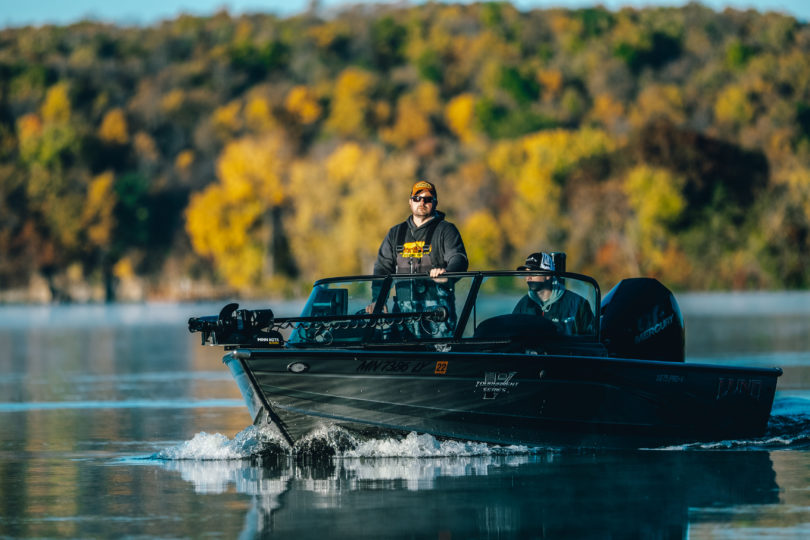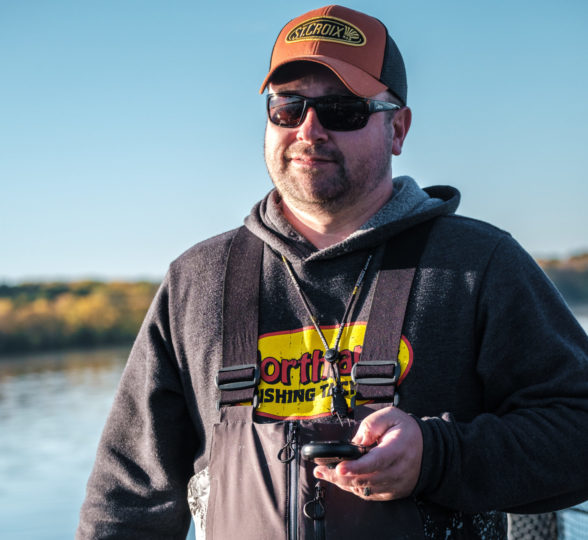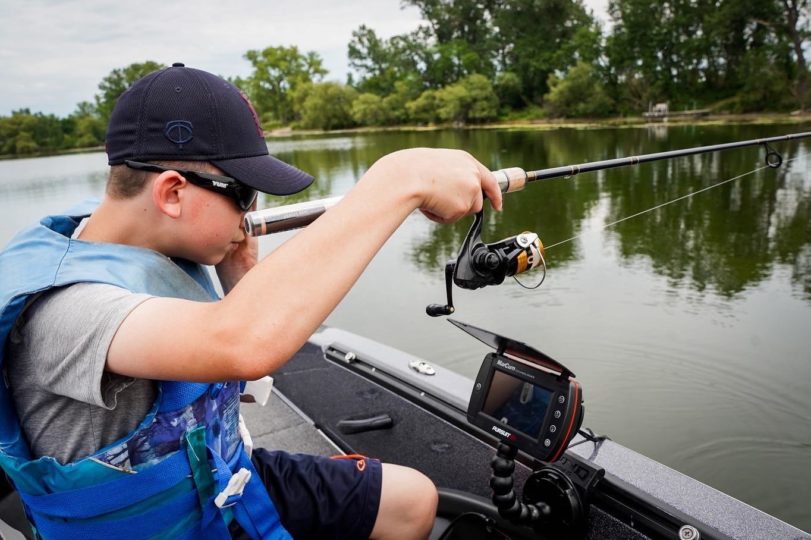
While the idea of finding your first ice spots in a boat isn’t a novel one, I’m always struck by the number of serious ice anglers that make this a priority each season. No doubt, it’s easier to drive around and scan structure for fish now vs. doing it one ice auger hole at a time come November and December. Advances in electronics make it easier now than ever, so the game isn’t necessarily the same as the last time I penned up this first-ice-advice.
Of course, it’s a busy time of year, with everything from hunting seasons to fall sports, helping to keep us off the water and teeing up the next ice season. That’s why it’s more important than ever to be efficient when you’re out there, to have a plan, and to use what technology is at your disposal to the best of your ability. Here’s my strategy on some home ice scouting that’ll make your winter fishing a whole lot easier.
Species Breakdown
First things first, you need to figure out what you’re going to chase. If the answer is multiple species, you’ve got a bit more work to do, but think in terms of each fish and its typical haunts in early ice. Go back in the files to successful ice bites of the past, and try to get a feel for where those fish have been in the fall. The later we get in the soft-water period, the odds are good that they’ll be very near winter locations.
For crappies, that’s the usual structure or deep weeds as it leads to basin edges. That’s where many of your gills can end up too depending on the lake in question. Bowl-shaped, basin-dominated water bodies will see fish giving more importance to those basin edges, while lakes with predominantly shallow water will see fish scatter to both, often using weeds as the great equalizer in terms of location and quality.
Fall walleyes love the ability to stay on structural breaks and drops by day, and to feed shallow in low-sky or low-light periods. The best structure in the lake, and nearby shallows then make for some great first-ice angling when ice is still forming. Fall baitfish spawns can drive those fish into skinnier water than you’d expect, and more comfortable water temps allow them to use lesser depths than people often look for them. Provided you’re not fishing under high skies and ultra-bright conditions, walleyes from late fall into early ice can be found in less than 10 FOW quite regularly. Pike roam the same waters late fall and into first ice, after both gamefish and bait.

Map Strategy
Separate the lake in question then into basins vs. structure vs. shallows. Get a general feel for what’s predominant by treating each section like its own specific lake. Take stock of each basin and treat it as a whole, even dropping a few waypoints of interest that you’d like to check in greater detail. These are almost always irregular edges of the basin, neck-down regions that feed from deep to shallow, or a steep drop-off of a great feeding flat with weeds.
The structure is a bit easier to locate, especially the main-lake near-shore stuff. This should be a focus for your fall walleye scouting, as good fall winds along big points or pockets make for obvious locations that are in play well into winter. Shallows on the other hand can be expansive, and harder to break down. Use your local knowledge of weeds, structure, and what cover might be shallow to think about panfish and walleye locations you’d like to scan.
Electronics Work
Side-imaging is a great tool when it comes to finding fall fish that are often congregated and very visually identifiable. Split your screen into the map-view you marked up in preparation, run side-imaging in at least the near-shore direction, and make sure to have your sonar or down imaging on too. If you don’t have side-imaging focus your efforts on basins primarily, as you’ll have better luck here marking fish than you will in less than 10 FOW.
As a general rule, on sonar, walleyes won’t show up as obviously as will panfish, mostly due to their lesser numbers in the food chain, but will be more visible on sonar at depth. Small pods or groups of fish that are primarily within 3 feet of the bottom are likely your targets here, whereas panfish species will typically be suspended in various parts of the water column. Still, panfish will be schooled up, and the graph should be very full of fish for you to consider it a winter hotspot.

From here, an additional step that’s often overlooked is species ID. Many schools of suckers have been considered as definite walleyes, and I’ve assigned panfish to what actually were white bass, drum, and/or carp many, many times. Fall water is usually a bit clearer, and given the propensity of fish to school up, a simple camera drop done near the sonar ducer usually gives you a glimpse at a few fish. That’s valuable knowledge to consider, and typically the mental icing on the cake needed to have confidence come first ice.
Final considerations should take place in the shallows, where the bulk of your side-imaging work should take place. Look for old docks, brush piles, or hard bottom spots inside of the weedline that may attract first ice gills or crappies. Speaking of weeds, the best panfish anglers I know focus on them nearly exclusively. They look for speciation first, with cabbage being a #1, then coontail a close second. From there, they look at clumps and how they’re spatially arranged, noting that fish will often use big beds of cabbage and coontail as travel routes. That’s especially true when connected by other weeds or another structural element. They find good weeds and fish at specific depths throughout, noting that size classes of crappies and bluegill are often depth dependent on them. Find quality fish, on quality weeds, at a specific depth, and you’ve got a narrow range of area to search in the rest of the lake to find other fish just like them.
Go into first ice this year prepared, and you may never take the fall off to hunt again. While you’re at it, consider dropping a line when you’re done, as the fish can be very eager right now. Just leave a few for the hardwater.
If you are looking for some helpful fishing information and tips on where to look for fishing spots, check out the Northland Tackle Lake of the Week maps.

